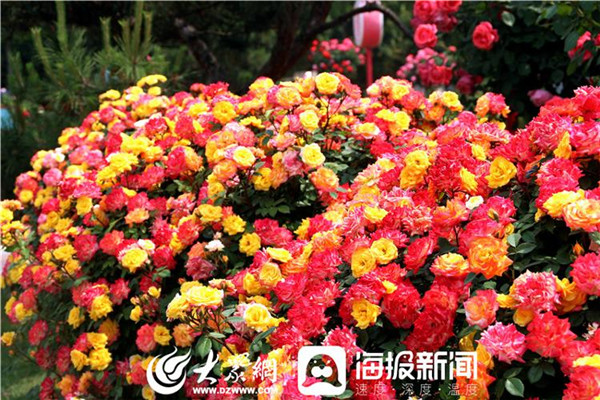Songcheng performers keep cultural heritage items alive
Wearing a comedic bright pink and green costume, 70-year-old street dancer Li Guangwu rolls forward, backward and sideways, and does the splits, as he plays an old woman trying to catch a butterfly.
His female partner, aged 50, gently controls a model butterfly hung at the end of a rod.
Attracting many tourists every day, the partners are just two of about 100 artists displaying Chinese intangible cultural heritage items at Qingzhou Songcheng, a tourism area in Weifang, Shandong province.
The Songcheng project is a riverside area covering 1.3 square kilometers with buildings and roads built in the style of the Song Dynasty (960-1279), the most prosperous period of the Qingzhou region.
The area was originally planned as a paintings and antiques market, but the local government decided to add intangible cultural heritage performances in 2012.
Gao Lingyun, the publicity chief of Qingzhou, said Qingzhou has abundant intangible cultural heritage items, some of which are nationally recognized.
"We invited masters to come out of their homes to show their skills at the site, not just to attract more tourists," she said. "We want to promote the heritage by letting more people see and know them."
On March 5, the traditional Lantern Festival, the site attracted about 320,000 visitors, Gao said.
The "Catching Butterfly" dance is a city-level intangible cultural heritage item dating back more than 200 years. It combines movements of dancing, martial arts and gymnastics.
Li said he began learning the dance from his father when he was 15, and now is teaching it to his grandchildren.
Other performances include traditional operas, sports, playing musical instruments and handicraft making. The site has also attracted masters from outside the city to perform.
Qingzhou locals Zheng Ziyan and Tian Baisheng, both 65, perform kuaiban, an oral storytelling accompanied by staccato bamboo clappers. They have been partners for three years.
Zheng said he learned the skill in the early 1970s when he was a soldier. "At that time, the theme of my shows was mostly life in the army," he said. "Now I sing about the great changes in my hometown."
The performers not only show what has been passed down over generations, but have created something of their own.
Li Xianchen, chairman of the association of shuttlecock kicking of Qingzhou, has practiced the sport for more than 60 years. He and his colleagues have developed a set of 108 new patterns of shuttlecock kicking based on traditional moves, and have named each of them with a local idiom, using the names of famous people, places or popular legends.
One pattern called "flower in the fairy girl's lips" features the performer kicking the shuttlecock up and catching it with his mouth. The name echoes the story of He Xiangu, a fairy girl in the Chinese legend of The Eight Immortals Crossing the Sea.

The association chairman said that by combining moves with local history and legends, they want to promote traditional culture instead of just a sport.
"The collective show is a brilliant innovation by the local government," he said. "It's good that visitors can see the intangible cultural heritage items live."
The government invests 2 million yuan ($322,040) a year as subsidies for the performing artists, but many said they are not there for the money.
"I would come here even if there was no subsidy," said Shen Hongfeng, who demonstrates liaobangchui, a locally developed lace technique. "I love the art and I want more people to love it, too."
The 62-year-old master has concerns about passing the skill to the next generation. "When I was 10, I spent about half a year to learn all the patterns," she said. "Now many young people like the art but do not have enough time to practice."
Publicity chief Gao said there are currently no schools to train interested young people, but the government will consider establishing some.
zhangzhao@chinadaily.com.cn
|
Li Guangwu (front) has practiced the 'Catching Butterfly' dance for 55 years. The performance attracts many locals and tourists. Wang Qian / China Daily |
|
Artist Zhang Xingfeng demonstrates her liaobangchui lacework, which took about 50 hours to finish. Wang Qian / China Daily |
(China Daily 07/08/2015 page17)



 Nishan Forum on World Civilizations
Nishan Forum on World Civilizations Explore magnificent Yellow River culture in Shandong
Explore magnificent Yellow River culture in Shandong

